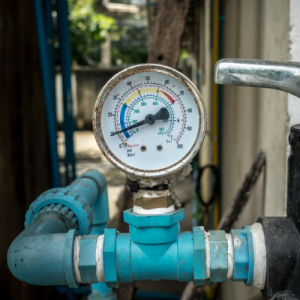Top Methods for Fixing Low Water Pressure in Your Home
Top Methods for Fixing Low Water Pressure in Your Home
Blog Article
Just about everyone may have their own piece of advice in relation to Low Water Pressure in the House?.

Low water pressure in your house can be an aggravating problem, impacting everything from showering to cleaning recipes. If you're experiencing weak water flow, there are numerous feasible reasons and services to discover. In this overview, we'll discuss common factors for low tide stress and practical actions to resolve the problem properly.
Introduction to Low Tide Stress
Low tide stress happens when the flow of water from your faucets, showers, and other components is weaker than normal. This can make daily jobs extra difficult and less effective. Comprehending the reasons for low tide stress is vital to finding the right service.
Typical Reasons For Low Water Pressure
Faulty Pressure Regulatory Authorities
Stress regulatory authorities are responsible for maintaining consistent water stress in your house. If they malfunction, it can lead to low water stress or unequal flow throughout the house.
Metropolitan Water Issues
Often, the problem exists outside your home. Community water supply problems, such as main line leaks or upkeep work, can momentarily decrease water stress in your area.
Pipeline Obstructions
Over time, pipes can end up being clogged with natural resource, debris, or particles, restricting the flow of water. This is a typical concern in older homes with galvanized steel pipes.
Rust
Deterioration within pipes can cause leaks and decreased water stress. Rust build-up can tighten water circulation, specifically in aging plumbing systems.
Just How to Identify Low Tide Pressure
Inspecting Pipes
Inspect noticeable pipelines for indicators of leaks, rust, or clogs. Take notice of any uncommon audios, such as knocking or rattling pipes, which might suggest issues within the plumbing system.
Consulting with a Plumber
If you're not able to determine the source of low water stress, consider employing a specialist plumber to conduct an extensive evaluation. They can identify underlying concerns and recommend ideal services.
Inspecting Faucets and Fixtures
Start by testing the water stress at different faucets and fixtures throughout your home. If the problem is separated to particular locations, it might indicate local troubles.
DIY Solutions to Take Care Of Low Tide Stress
Flushing Hot Water Heater
Sediment accumulation in the water heater can restrict flow and decrease effectiveness. Purging the tank regularly assists remove sediment and keep optimal performance.
Examining Stress Regulator
Ensure that the pressure regulatory authority is functioning properly. Changing or replacing the regulator can aid recover correct water pressure throughout your home.
Cleaning Aerators and Showerheads
Natural resources can gather in aerators and showerheads, minimizing water flow. Remove and clean up these parts routinely to boost water stress.
Clearing Up Clogs in Pipeline
For minor obstructions, try using a plumbing serpent or chemical drain cleaner to clear obstructions in pipelines. Be cautious when utilizing chemicals and adhere to safety and security guidelines.
When to Call a Specialist Plumber
If DIY efforts fall short to deal with the problem or if you believe significant plumbing issues, it's ideal to look for help from an accredited plumber. They have the experience and tools to deal with complicated problems safely and properly.
Safety Nets to Keep Water Stress
Setting Up a Stress Booster
Think about mounting a pressure booster pump to improve water stress in areas with consistently low flow. This can be particularly helpful for multi-story homes or homes with high-demand fixtures.
Monitoring Water Usage
Be mindful of water usage routines and avoid overtaxing the plumbing system. Easy changes, such as astonishing showers and laundry lots, can aid preserve sufficient water pressure.
Normal Maintenance
Set up routine upkeep for your plumbing system to avoid concerns such as rust, leakages, and clogs. Resolving minor issues early can assist prevent more considerable repairs in the future.
Verdict
Handling low tide stress can be aggravating, however recognizing the underlying causes and implementing suitable options can recover optimum circulation throughout your home. Whether it's cleaning up aerators, checking pipelines, or seeking advice from a plumber, taking positive steps can make certain a stable supply of water for your everyday requirements.
FOUR WAYS TO FIX LOW WATER PRESSURE NOW
Turning on a shower or faucet only to find the water comes out in a sad, slow drizzle is never a good feeling. How exactly are you supposed to wash a pan or take a quick shower when it takes 10 minutes just to rinse off a little soap? The good news is that when your water pressure is bad, there's always a cause: typically one that can be easily fixed. Here are some of the most common causes of low pressure and what you can do to fix the issue:
DEBRIS AND MINERAL DEPOSIT BUILDUPS
If you notice low water pressure from just one or two of the fixtures in your house, the problem likely has to do with debris buildup. Water is full of minerals and other debris, all of which can accumulate in your pipes and on your fixtures. This can cause a blockage that affects how much water flows through. To fix this, try filling a small plastic bag with white vinegar, and use a rubber band to hang it around your showerhead or faucet. Let the head of the fixture soak for a few hours, and the vinegar should loosen the deposits.
WATER LEAKS
Leaks are another common cause of low water pressure. If water is flowing out of your plumbing through a hole or crack before it can reach your fixture, the pressure coming out of the faucet or showerhead will be lower. A plumbing professional is your best bet for finding and repairing a leak in your water supply pipes.
Leaks are another common cause of low water pressure. If water is flowing out of your plumbing through a hole or crack before it can reach your fixture, the pressure coming out of the faucet or showerhead will be lower. A plumbing professional is your best bet for finding and repairing a leak in your water supply pipes.
A VALVE ISSUE
If you have low water pressure throughout your home, check your main shut-off valve to make sure it's completely open. You may also want to see if there's a pressure-reducing valve installed. If there is, have a plumber help you adjust the settings to get the pressure you're looking for.
OTHERS USING WATER
Believe it or not, your low water pressure could be caused by your neighbors. If you notice low pressure at certain times of day, it may be because you and the people living next to you have similar schedules - when everyone is showering at the same time, the pressure will be lower in every home. Low pressure throughout the neighborhood may also be caused by an issue with your municipal water supply. If that's the case, call the supplier to see if they're working on the issue.
https://www.rotorooter.com/blog/water-leaking/low-water-pressure-fixes/

I am just very interested by 4 Ways to Troubleshoot Low Water Pressure and I am praying you enjoyed reading the new blog entry. Are you aware of someone else who is serious about the subject? Be sure share it. Many thanks for your time. Come back soon.
Maintenance Sign-Up Report this page